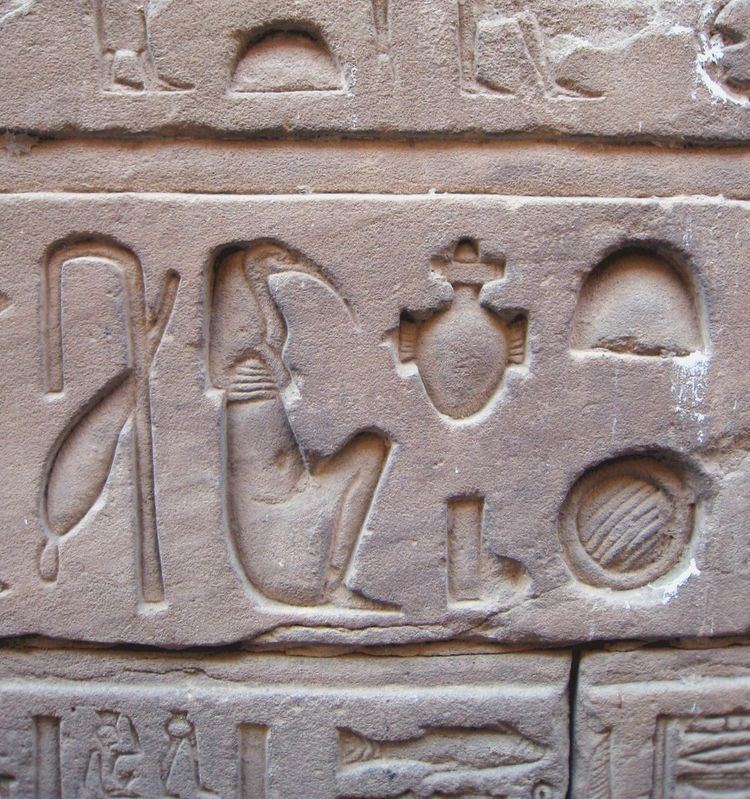 | ||
The Ancient Egyptian Bread bun hieroglyph is Gardiner sign listed no. X1 for the side view of a bread bun. It is also the simple shape of a semicircle. The hieroglyph is listed under the Gardiner category of loaves and cakes.
Contents
"Bread bun/Semi-circle" as Feminine Determiner
Besides alphabetic-t, the bread bun is used for words that are feminine, as an end qualifying determinant, often shown before other qualifying ideograms or determinants in the hieroglyphic word block-(quadrat hieroglyphic block).
Palermo Stone
The t hieroglyph is used extensively throughout the Palermo Stone of the 24th to 23rd century BC, and it is used in the first row (Row I of VI), for the naming of King Tiu of Lower Egypt (a King of the North).
Palermo Stone, King Series, Row I (predynastic)
The following is the list of predynastic pharaohs (Nile Delta north) represented on the Palermo Piece of the 7–piece Palermo Stone: The sequence is in the proper order with the beginning Pharaoh on the right: (reading right-to-left, seven complete names pictured in year-registers):
Note: On the Palermo Stone all the hieroglyphs face in the other direction (Gardiner signs are only facing left; on the stone they face right (reading right-to-left)). The source of the following Pharaohs is only from this King List; a few have artifacts that further confirm their reign (the Double Falcon King). The pharaohs deficient in information are: Hsekiu, Khayu, Tiu (pharaoh), Thesh, Neheb, Wazner, Mekh.
The Egyptian hieroglyph alphabetic letters
The following two tables show the Egyptian uniliteral signs. (24 letters, but multiple use hieroglyphs)
